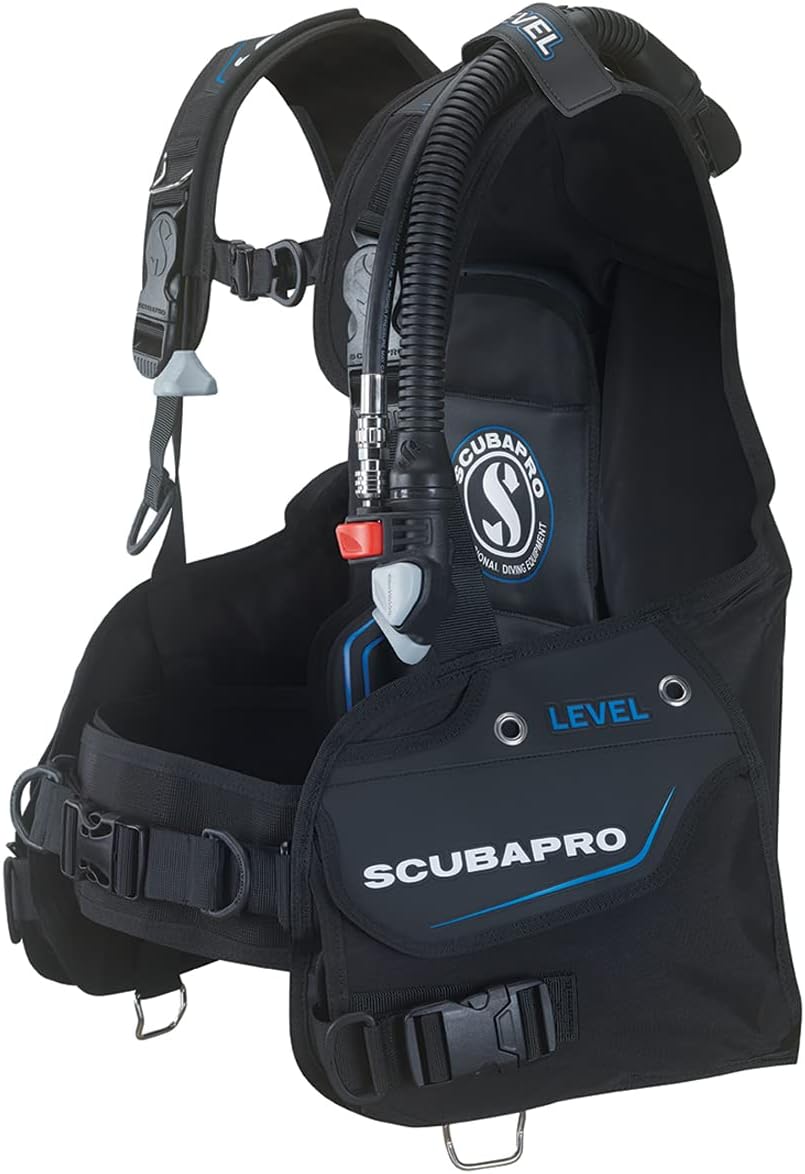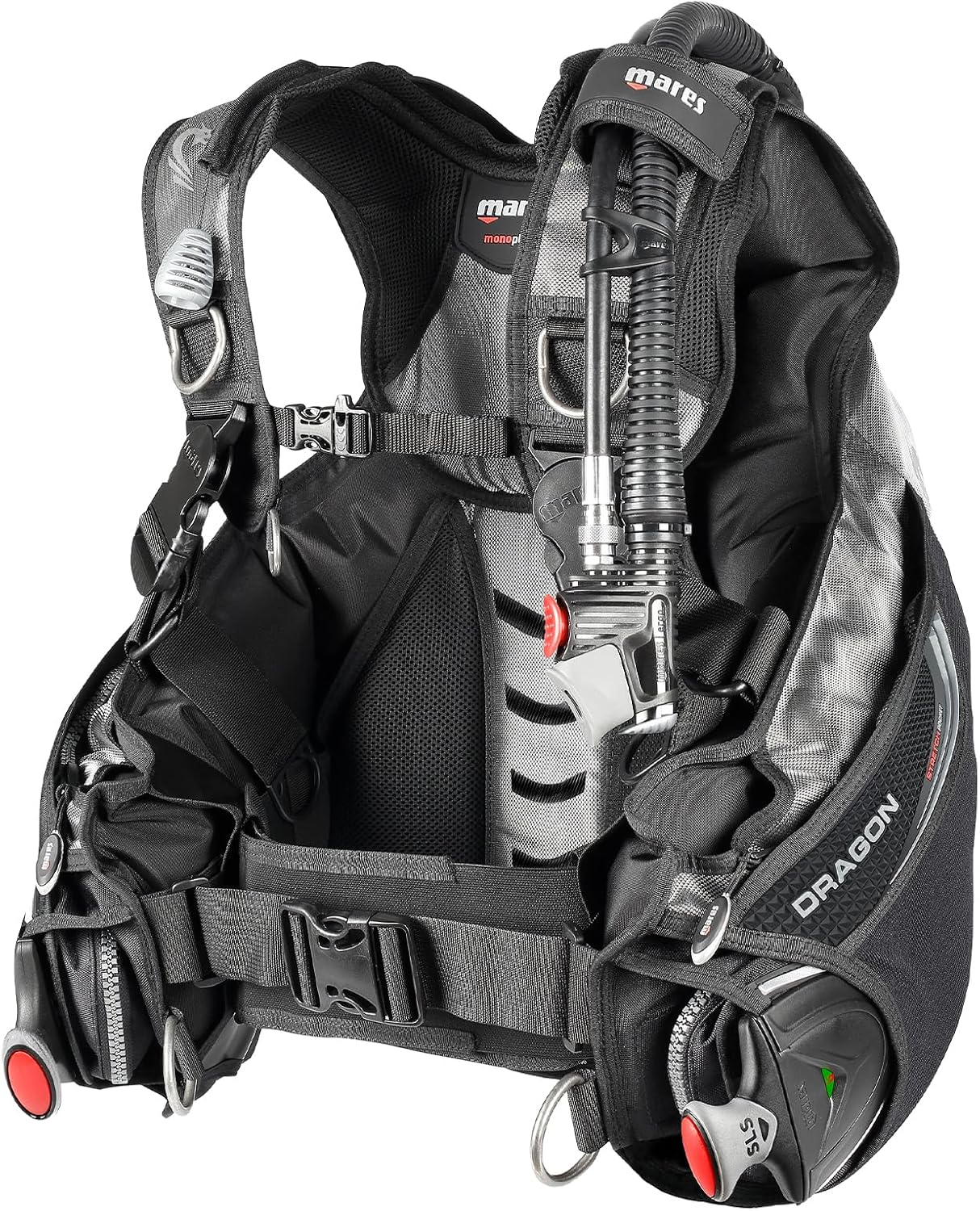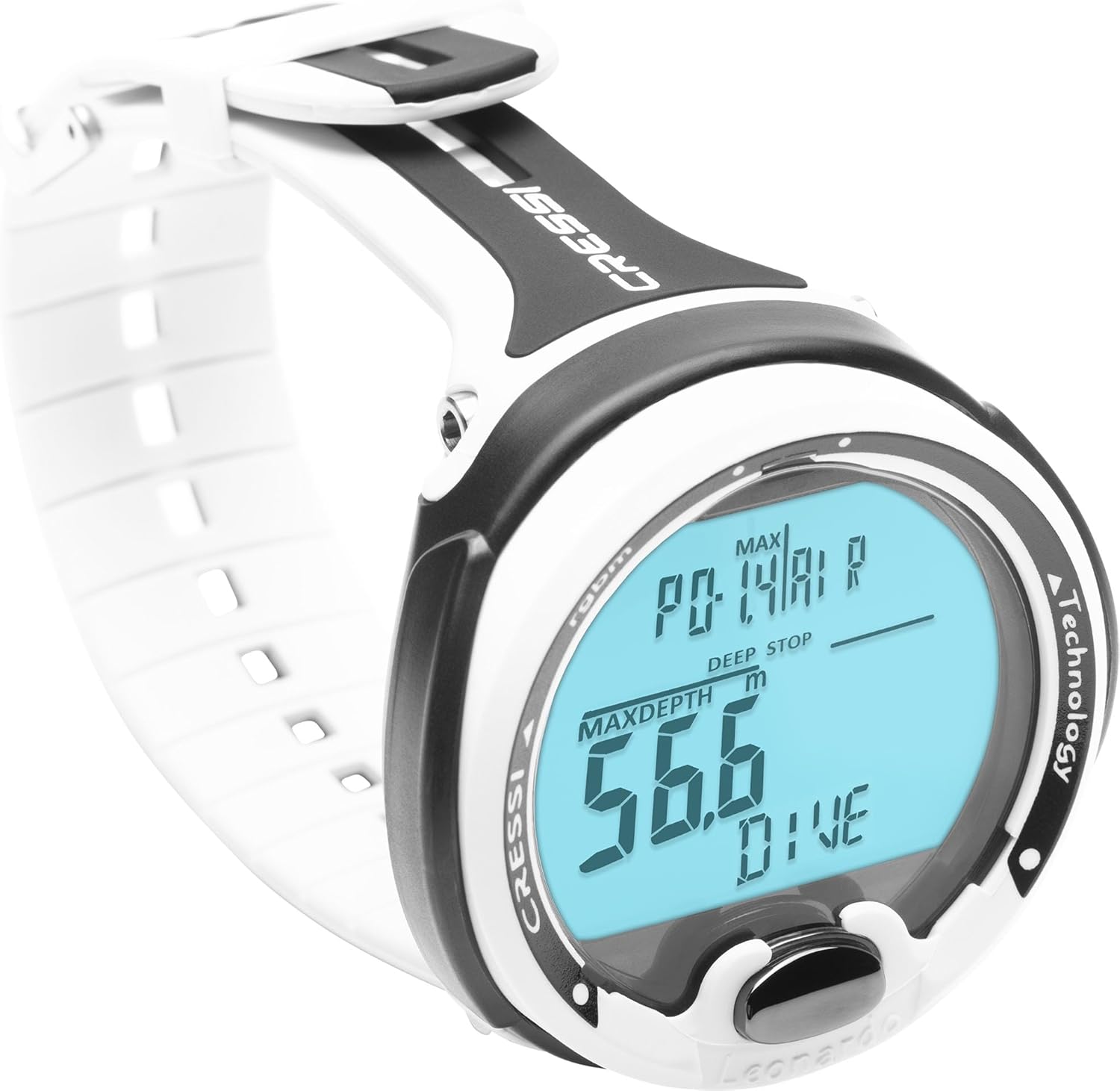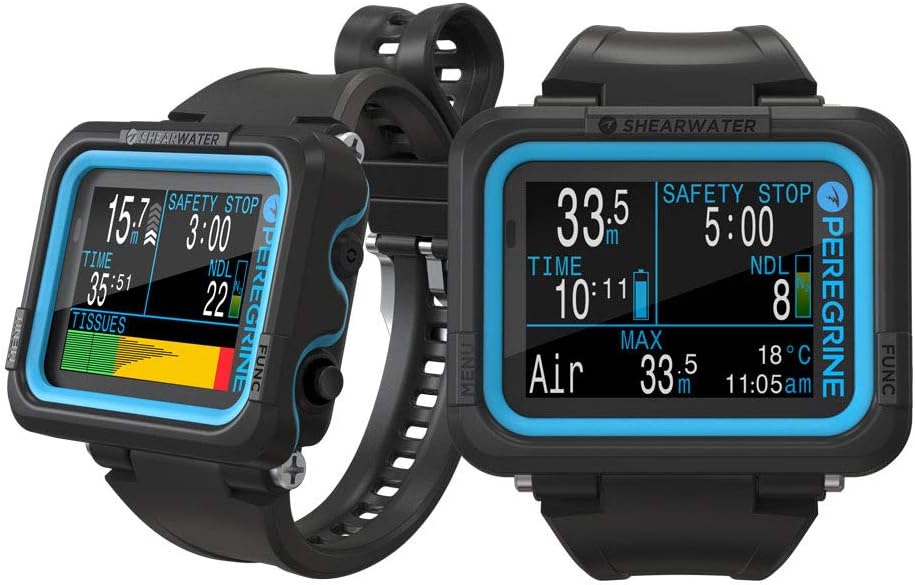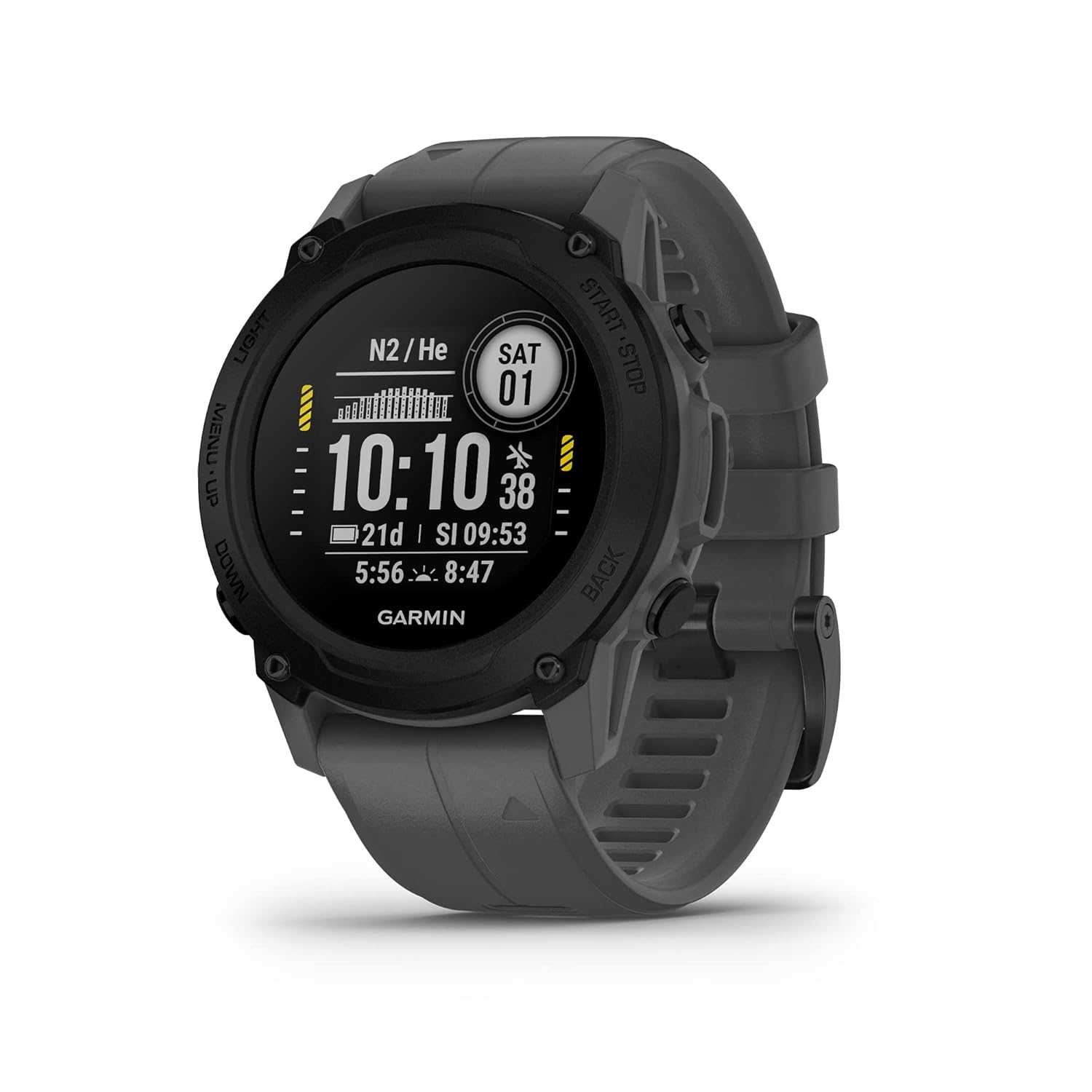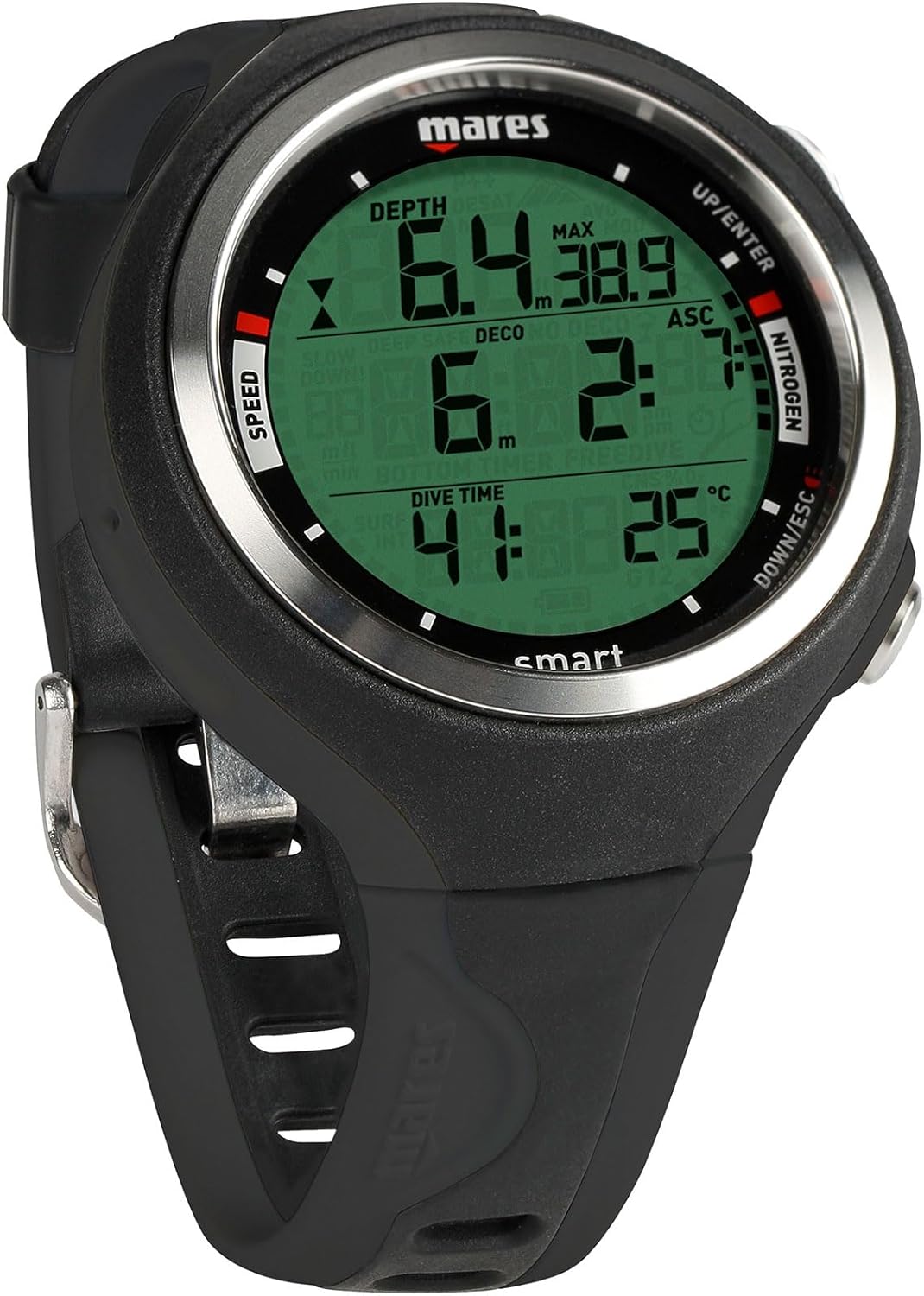How Deep Does Scuba Diving Go
How deep does scuba diving go? Well, somewhere between “shallow enough to make friends with a sea turtle” and “deep enough to wonder if sunlight is just a myth.”
It’s a question that starts with casual curiosity and quickly tumbles into a world of pressurized suits, nitrogen narcosis, and records that make you question your own lung capacity.
Let’s be honest; if you’ve ever asked yourself how deep does scuba diving go, it wasn’t just about the number. It was about what’s down there. Wrecks, whales, weird fish with headlights on their heads and maybe a dash of “could I survive that?” The short answer? Yes… with training, gear, and an agreement with your bladder not to panic at 130 feet.
Exactly How Deep Does Scuba Diving Go?
In standard recreational scuba diving, the maximum recommended depth is 130 feet (40 meters). That’s the official cap according to agencies like PADI, NAUI, and SSI. But let’s get real: that’s just the start of the pressure-packed rabbit hole.
Here’s how it breaks down:
- Beginner divers (Open Water): max 60 feet (18 meters)
- Advanced recreational divers: max 130 feet (40 meters)
- Technical divers (with gas mixes & decompression training): often go beyond 200 feet (60 meters)
- Commercial or military divers: regularly reach 1,000 feet (300 meters) using special equipment
- The scuba diving depth record? A staggering 1,090 feet (332.35 meters) — by Ahmed Gabr in 2014.
Yes, the deepest scuba dive went more than 1,000 feet underwater, and no, he didn’t accidentally drop his phone and go looking for it.
What Is Considered “Deep” in Scuba Diving?
Let’s settle this once and for all: not all deep dives are created equal.
In scuba terms, “deep” is:
- Beyond 60 feet (18m) = deeper than beginner level
- Past 100 feet (30m) = officially deep by recreational standards
- 130 feet (40m) = the scuba diving max depth for recreational divers
Beyond that, you’re diving into the world of technical and commercial diving, where things get complicated and expensive fast.
So, when someone asks how deep can humans dive, the cheeky answer is: as deep as science, oxygen, and your sanity will allow.
How Deep Can a Human Dive with Scuba Gear?
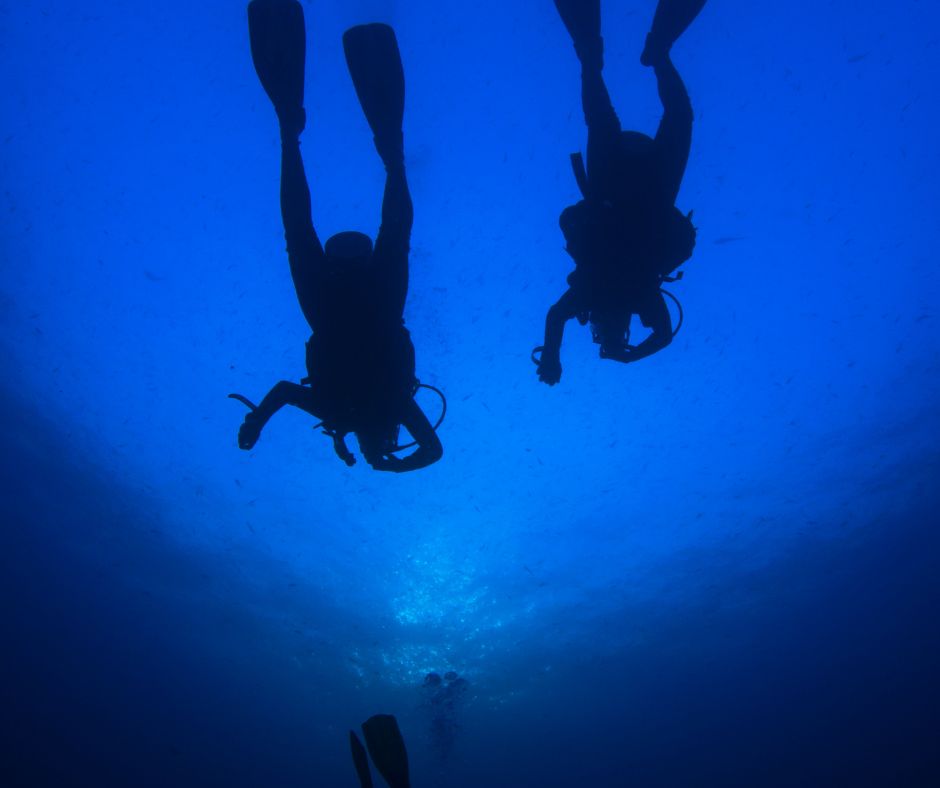
The short answer? Most recreational scuba divers can safely go as deep as 40 meters (130 feet). But if you’re picturing yourself exploring shipwrecks on the ocean floor or finding Nemo’s long-lost relatives in the abyss, hang tight, the full answer is deeper than that.
Let’s break it down by type of diving:
1. Recreational Diving (Max Depth: 40 meters / 130 feet)
This is what most certified scuba divers are trained for — fun, safe, accessible exploration.
- Open Water certification (PADI, NAUI, SSI): Depth limit is 18 meters (60 feet).
- Advanced Open Water certification: Depth limit increases to 30 meters (100 feet).
- Deep Diver specialty training: Maxes you out at 40 meters (130 feet).
Why the limit? Because below 40 meters, risks start to climb:
- Nitrogen narcosis can impair your judgment and coordination.
- Air consumption increases, shortening your dive time drastically.
- Decompression sickness becomes more likely if you ascend too quickly.
And no one wants a case of “the bends” while you’re still in your fins.
2. Technical Diving (Tech Diving) (100+ meters / 330+ feet)
When divers want to go beyond recreational limits to explore caves, wrecks, or just to chase depth records, they enter the world of technical diving.
- Tech divers use special gas mixtures like trimix (oxygen, nitrogen, helium) to reduce nitrogen narcosis and oxygen toxicity.
- They carry multiple tanks and follow strict decompression schedules.
- Some use rebreathers, which recycle exhaled gas for longer, deeper dives.
With proper training and experience, humans have scuba-dived as deep as:
332.35 meters (1,090 feet) is the scuba diving depth record, set by Ahmed Gabr in 2014.
Let that sink in. That’s over three times the recreational limit — a dive that took 12 minutes to descend, and nearly 15 hours to ascend safely.
So, How Deep Can a Human Really Dive With Scuba Gear?
| Type of Diver | Max Recommended Depth |
| Recreational Diver | ~40 meters / 130 feet |
| Advanced Diver (with specialty) | ~40 meters / 130 feet |
| Technical Diver | 100+ meters / 330+ feet |
| World Record | 332 meters / 1,090 feet |
Above all, depth isn’t just about how far you can go, it’s about how safely you can get back up. The deeper you go, the more complex the planning, the heavier the equipment, and the greater the risk.
What Happens to the Human Body at Different Depths?
Scuba diving isn’t just a wet version of hiking. The deeper you go, the more your body starts reacting to pressure and not the metaphorical kind.
At every 10 meters (33 feet), the pressure increases by one atmosphere (atm):
- At 10m, you’re under 2 atm of pressure.
- At 40m, you’re under 5 atm — five times what you’re used to.
This affects:
- Your lungs, which compress with depth
- Nitrogen absorption, which increases and can lead to nitrogen narcosis (aka “the martini effect” — you feel drunk)
- Oxygen toxicity, which becomes dangerous when using high-concentration mixes
- Decompression risk, where nitrogen bubbles form in your blood if you ascend too quickly
These aren’t “maybe” risks, they’re definitely going to happen if you ignore dive safety protocols.
How Deep Can Humans Dive Without Equipment?
Without scuba gear, relying only on a deep breath and nerves of steel, humans can still dive to impressive depths. This is called freediving.
- Average freedivers (trained ones, not weekend snorkelers) can often reach 20 to 40 meters (65 to 130 feet).
- Elite competitive freedivers have gone over 100 meters (328 feet) on a single breath. That’s deeper than the height of the Statue of Liberty — including the pedestal.
The freediving depth world record is jaw-dropping:
- Herbert Nitsch (Austria), on 6 June 2012, broke his own record by diving to 253.2 meters (831 feet) in the “No Limits” category, which uses a weighted sled for descent and a lift bag for ascent. It’s the deepest any human has ever dived without scuba gear.
However, going that deep comes with serious risks: oxygen deprivation, blackouts, nitrogen narcosis, and lung squeeze, so unless you’re part mermaid, best leave record-breaking to the pros.
How Deep Can Humans Dive Before Being Crushed by Pressure?
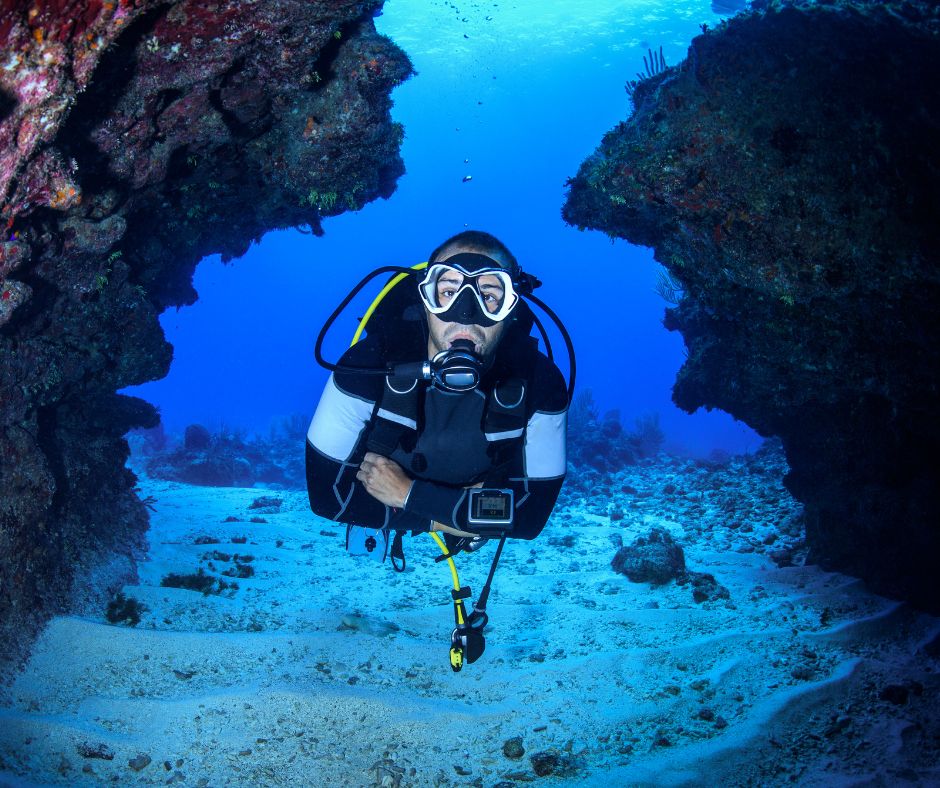
This is where science and biology step in and the answer might surprise you.
Humans don’t get “crushed” by water pressure in the way you might imagine (like soda cans in a trash compactor). Instead, the air-filled spaces in our bodies like lungs, sinuses, and ears, are what feel the squeeze.
Here’s why:
- Pressure increases by about 1 atmosphere (atm) for every 10 meters (33 feet) of seawater.
- At 100 meters, you’re under 11 atmospheres of pressure, that’s 11 times what you feel on land.
Now, the human body, mostly made of incompressible water, handles pressure remarkably well. The problem is with:
- Lungs, which get compressed.
- Nitrogen absorption, which can lead to narcosis or decompression sickness.
- Oxygen toxicity, at very high partial pressures.
So… how deep can humans dive before pressure becomes lethal?
- Without protective gear or mixed gases, humans can handle up to about 300 meters (984 feet) with special equipment and gas mixes.
- Beyond that, you’re playing a high-stakes game with pressure, gas toxicity, and physiology.
At around 1,000 meters (3,280 feet), even advanced submersibles (tiny submarines) are used — that’s far past any diver’s limit.
In short: humans don’t “pop” or get crushed outright but your lungs would collapse without pressurized gear or rebreathers, and deep water pressure will quietly shut your body down if you go too far without preparation.
What Certifications Are Required to Dive Deep?
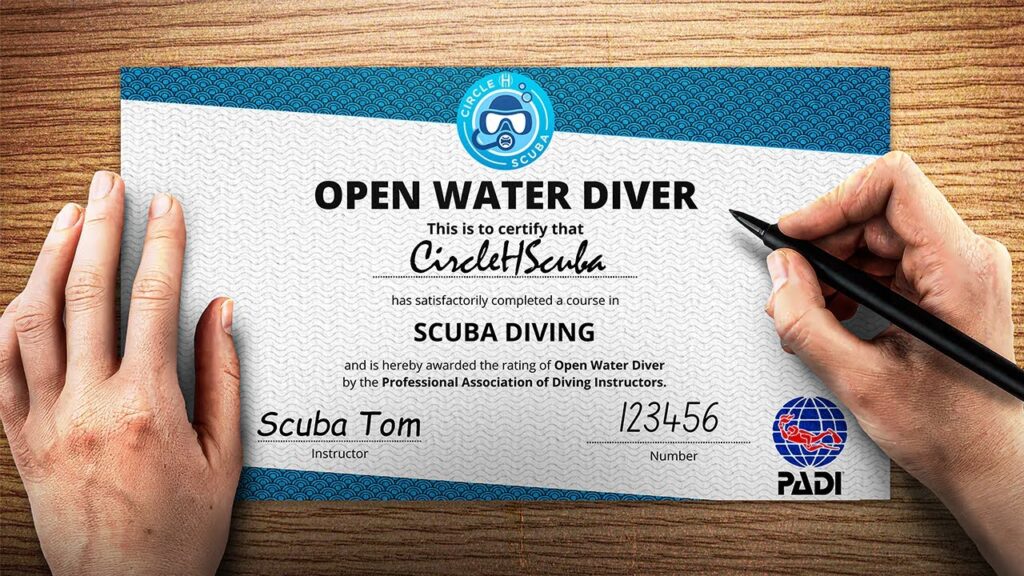
You can’t just rent a tank and start free-falling underwater like a Bond villain. Deeper dives require certified training, with structured progression:
- Open Water Certification (e.g. PADI): Max 18m (60ft)
- Advanced Open Water Diver: Max 30m (100ft)
- Deep Diver Specialty: Max 40m (130ft)
- Technical Diver Courses: Beyond 40m with decompression training
If you’re wondering how to get scuba diving certification, start with a local dive center and work your way through the levels. It’s part training, part adventure, and part learning how to not die in style.
What Gear Do You Need to Dive Deep?
|
|
|
|
Recreational scuba gear works fine up to 130 feet, but go deeper and you’ll need:
- Redundant air systems (like pony bottles or twin tanks)
- Dive computers that handle decompression schedules
- Pressure-resistant regulators
- Specialized gas mixes (like trimix or heliox)
|
|
|
|
Some divers even use rebreathers, which recycle your exhaled air and extend dive time but they’re pricey, technical, and not for casual trips.
Looking to upgrade? Don’t miss the best scuba gear set to stay safe, stylish, and floaty.
How Long Can You Stay at Certain Depths?
Good question and one most beginners never think to ask.
Time at depth depends on:
- Your depth
- Your air consumption
- No-decompression limits (NDL)
Example:
- At 60 feet, you can stay about 50 minutes without decompression stops.
- At 100 feet, you’re down to about 20 minutes.
- At 130 feet, just 10 minutes.
Beyond those times, you need to start doing decompression stops, which can dramatically extend your surface interval (or kill you if skipped — no pressure).
What Are the Dangers of Diving Deep?
Let’s be blunt: deep diving is no joke.
Here’s what can go wrong:
- Decompression Sickness (aka “The Bends”): nitrogen bubbles in your bloodstream
- Nitrogen Narcosis: makes you feel drunk and disoriented
- Oxygen Toxicity: seizures and unconsciousness at high partial pressures
- Running out of air: deeper dives consume more air, faster
- Gear failure: more pressure = more stress on equipment
So, is scuba diving dangerous? It’s like skiing, safe if trained, risky if reckless. Always dive within your limits and with a buddy.
Don’t worry, though, diving isn’t about flirting with death; it’s about exploring Earth’s alien worlds. Safely.
What’s the Science Behind Pressure at Depth?
A little geekery never hurt anyone.
You’re dealing with:
- Boyle’s Law: pressure up = volume down. Your lungs, BCD, and air bubbles shrink the deeper you go.
- Dalton’s Law: total gas pressure = sum of individual gas pressures. It explains why oxygen or nitrogen can become toxic.
And no, you can’t just “equalize” your way to 300 feet without training. Physics doesn’t bend for bravado.
Is Deep Diving Worth the Cost and Risk?
This one’s subjective, but here’s the breakdown:
PROS:
- Epic wrecks, walls, and caves
- Fewer people = more solitude
- It feels like an elite level of exploration
CONS:
- Expensive gear
- Longer prep and recovery times
- More risks
So, if you’re looking for thrills, stories, and unreal sights, it’s worth it. But if you just want to float with sea turtles at 25 feet, that’s equally magical (and safer).
How Deep Is Too Deep? Record-Breaking Dives
Let’s revisit the numbers for bragging rights:
- Deepest scuba dive (on record): 1,090 feet (332.35 meters) – Ahmed Gabr
- Deepest unassisted freedive: 831 feet (253.2 meters) – Herbert Nitsch
- Typical military/commercial dive: 1,000+ feet using saturation diving
These are elite athletes, not weekend warriors. So, while it’s cool to ask “how deep does scuba diving go,” just know that past a certain point, you’re not diving, you’re entering a high-risk science experiment.
If you’re obsessed with records, look up the scuba diving depth record and deepest scuba dive stories, they’ll blow your fins off.
Best Deep Dive Locations Around the World
Want to go deeper? Try these legendary sites:
- Blue Hole, Dahab (Egypt) – notorious, beautiful, and tragic
- SS Thistlegorm, Red Sea – a WWII wreck at 100 feet
- Cenote El Pit, Mexico – eerie, deep, and otherworldly
- Truk Lagoon, Micronesia – wreck diver’s paradise
- The Andrea Doria (USA) – the “Mount Everest of wreck diving”
Just make sure your training matches the depth. These aren’t walk-in-the-park reef dives.
The Bottom Line on How Deep Does Scuba Diving Go
So, how deep does scuba diving go? The answer lies somewhere between “as deep as 130 feet for most of us” and “don’t even think about 1,000 feet unless your name is Ahmed Gabr and you like 14-hour ascents.”
Scuba diving is a beautiful, life-changing experience when done safely. Whether you’re diving coral reefs in 30 feet or wrecks at 100, every depth has its own magic.
And if you’re just getting started, begin with understanding what does scuba diving stand for because beneath the surface, it’s more than just tanks and bubbles. It’s a whole world waiting to be explored at your own pace, and within your own limits.
